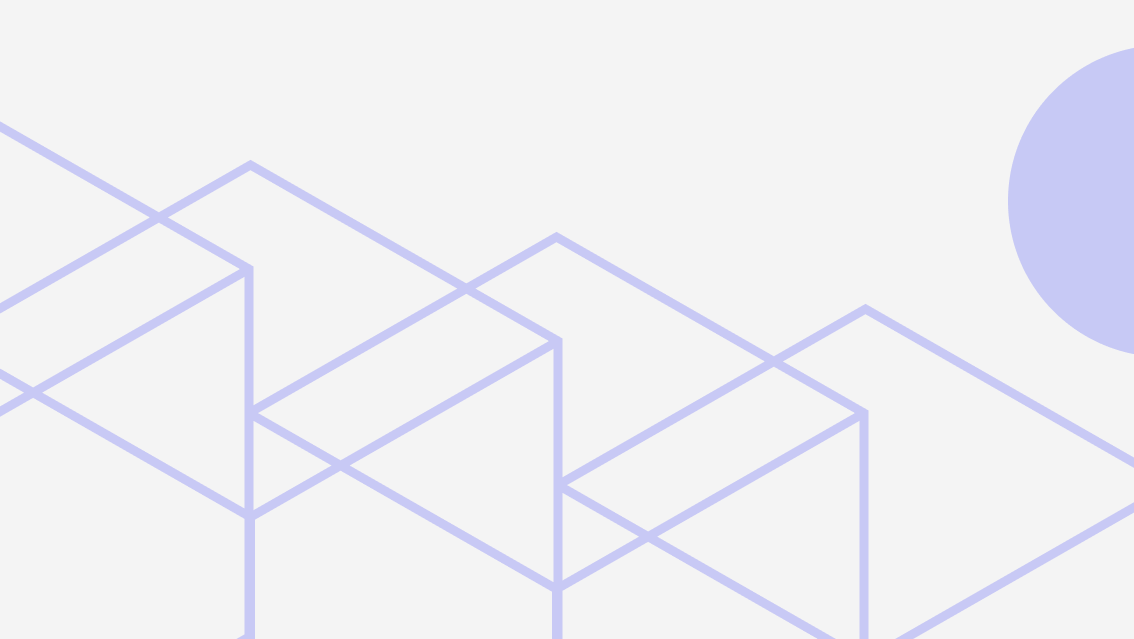For years, the Quali team has partnered with infrastructure and operations teams to accomplish one primary goal—make it easier to deliver high-quality infrastructure.
As the infrastructure that our customers rely on has evolved, so has our selection of product offerings. If you take a look at our customer base today, you’ll find organizations using at least one of, if not a combination of, Quali CloudShell and Quali Torque.
Naturally, this has prompted a common question among our customer base—what’s the difference between Quali Torque and Quali CloudShell?
Here we break down the differences to help you understand which product might be the right fit for your teams.
What do Quali CloudShell and Torque have in common?
Before diving into each product, it helps to understand that both of our products are designed with a focus on complex environments.
This leads to another of our most common questions—what is an environment?
For our customers, “environments” refer to the full configuration of all infrastructure components—the hardware, cloud services, dependencies, and so on—needed to support a project, such as the testing or development stages of the software development lifecycle.
Before working with us, our customers typically face complex, lengthy, and redundant provisioning and orchestration processes that do not scale. Further, our customers invariably struggle to understand and control how their infrastructure assets are configured (and, as a result, how budget is used).
Regardless of the technologies and configuration tooling they use, we deliver the same result. Developers, testers, and other end users can launch their environments via self-service, while the infrastructure experts spend less time manually orchestrating and managing them.
The differences between our products stem from the infrastructure that our customers use.
Quali CloudShell turns infrastructure into reusable, no-code building blocks to orchestrate environments faster
Many of our customers approach us to help scale their infrastructure assets.
This includes both on-premises hardware and services delivered via public cloud platforms such as AWS and Azure.
When end users need this infrastructure, they submit a ticket to an IT or operations team that is responsible for provisioning each component and configuring them into a functional environment.
At scale, the manual process and ephemeral nature of this infrastructure can substantially increase the amount of time and resources that it takes to execute the projects that rely on it. Put simply, every time someone needs it, someone else needs to build it.
Quali CloudShell alleviates these challenges by creating reusable, low-code definitions for frequently used infrastructure. In the CloudShell UI, infrastructure and operations teams can drag-and-drop these infrastructure assets to configure the complete environment.
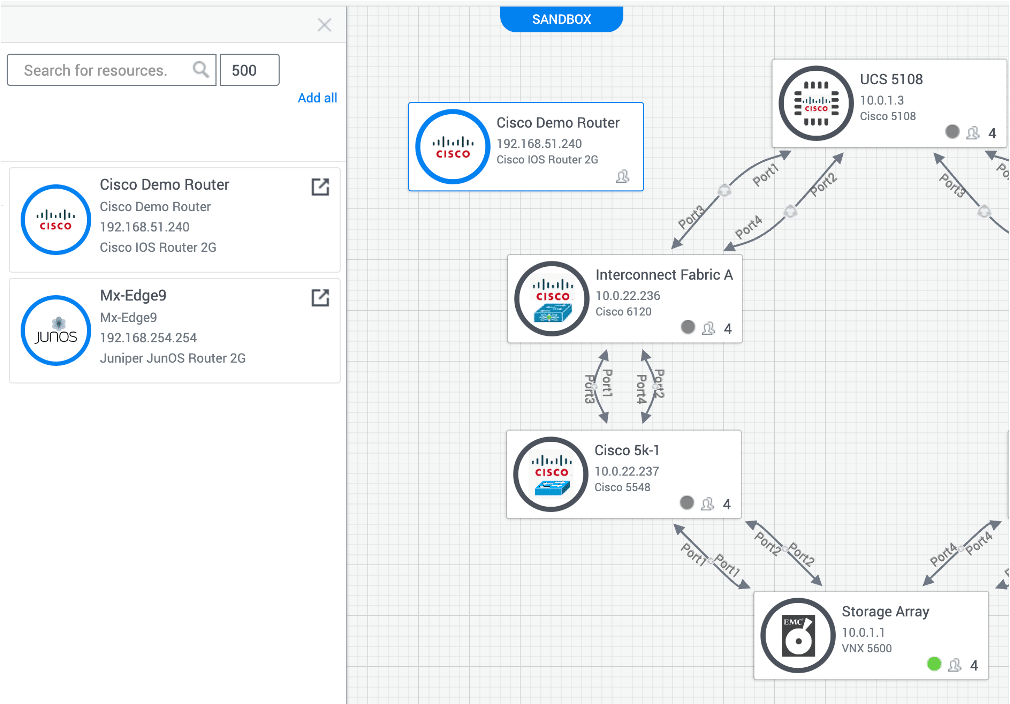
Once orchestrated, the entire environment is also reusable, eliminating the need for infrastructure teams to ever build it again. At Quali we call this a blueprint because it defines the complete environment that you can launch.
This reduces the manual work to provision each environment that slows down your infrastructure teams, allowing them to focus on more important tasks.
The reusable nature of CloudShell’s blueprints also makes things easier for the end user who needs access to environments.
Once infrastructure experts publish an approved blueprint for an infrastructure, end users can find and deploy it via CloudShell’s self-service catalog. Role-based access controls give end users on-demand access while ensuring that all infrastructure is deployed exactly as the infrastructure team intended.
This build-once-and-deploy-repeatedly approach has a substantial impact on productivity and efficiency for the teams that need access to infrastructure.
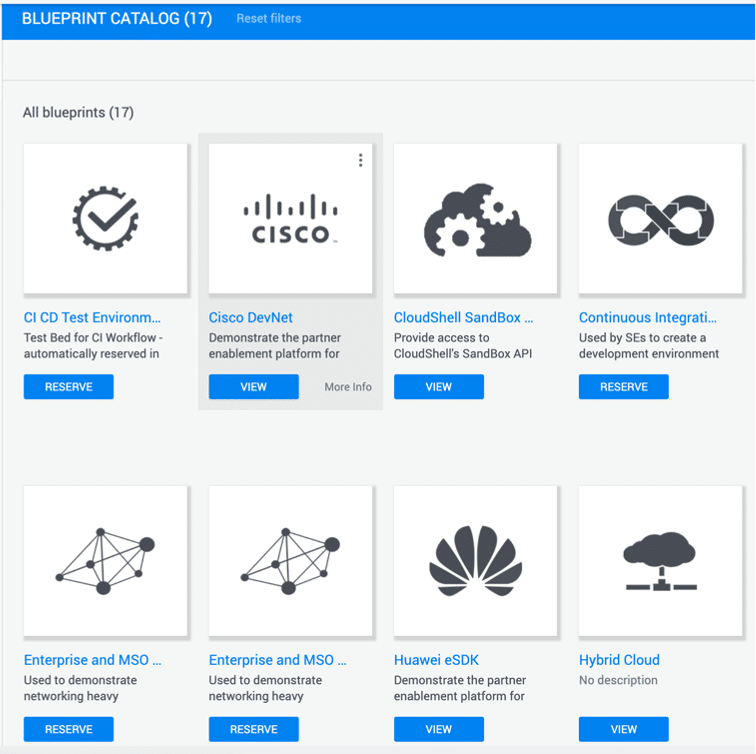
Learn More About Quali CloudShell
Once you’ve started delivering infrastructure via Quali CloudShell, you can optimize those configurations continuously. Any changes required to maintain performance, security, or cost efficiency can be made to the reusable environment blueprints delivered via CloudShell, ensuring that everything end users deploy is up to date with the latest configurations.
So, if both Quali CloudShell and Quali Torque automate environments, how is Torque any different?
Quali Torque orchestrates and normalizes your existing Infrastructure as Code and Kubernetes resources
As our relationships with our customers has grown over the years, we’ve noticed that the way they manage infrastructure has evolved as well.
More and more DevOps and IT operations teams have embraced Infrastructure as Code tools like Terraform and AWS CloudFormation, as well as container technologies like Kubernetes and Helm.
Especially for increasingly cloud-native workloads, these teams had already defined their cloud infrastructure and application services via their preferred open source tools.
At scale, however, these teams faced a new challenge. The DevOps and IT teams responsible for maintaining IaC, Kubernetes, and legacy virtualized infrastructure still needed to orchestrate environments.
Increasingly, our customers saw that developers and other end users require environments that consist of cloud infrastructure and microservices that are defined in multiple IaC configurations and Kubernetes tools. For example, a developer may need an environment consisting of an AWS database defined in AWS CloudFormation, Azure cloud storage defined in a Terraform configuration, and containerized infrastructure defined in a Helm Chart.
Even if the DevOps or IT ops team responsible for fulfilling this request is fortunate enough to leverage infrastructure as code definitions for each component, they will need to manually code those assets together to reconcile the differences between the tools and the languages they use.
This manual orchestration, testing, and validation could take hours or days, delaying the end user’s access to the infrastructure they use and limiting the DevOps or IT team’s bandwidth.
So we designed Quali Torque to automate orchestration of environments from the configurations and containerized infrastructure assets our customers already use. Think of Torque as a control plane that allows you to orchestrate, operate, and manage your existing cloud infrastructure definitions regardless of the platform behind it or the tool used to define it.
Quali Torque connects to the customer’s Git repositories directly—with support for GitHub, GitLab, Bitbucket, and Azure DevOps repositories—and automatically discovers and understands the infrastructure within each asset.
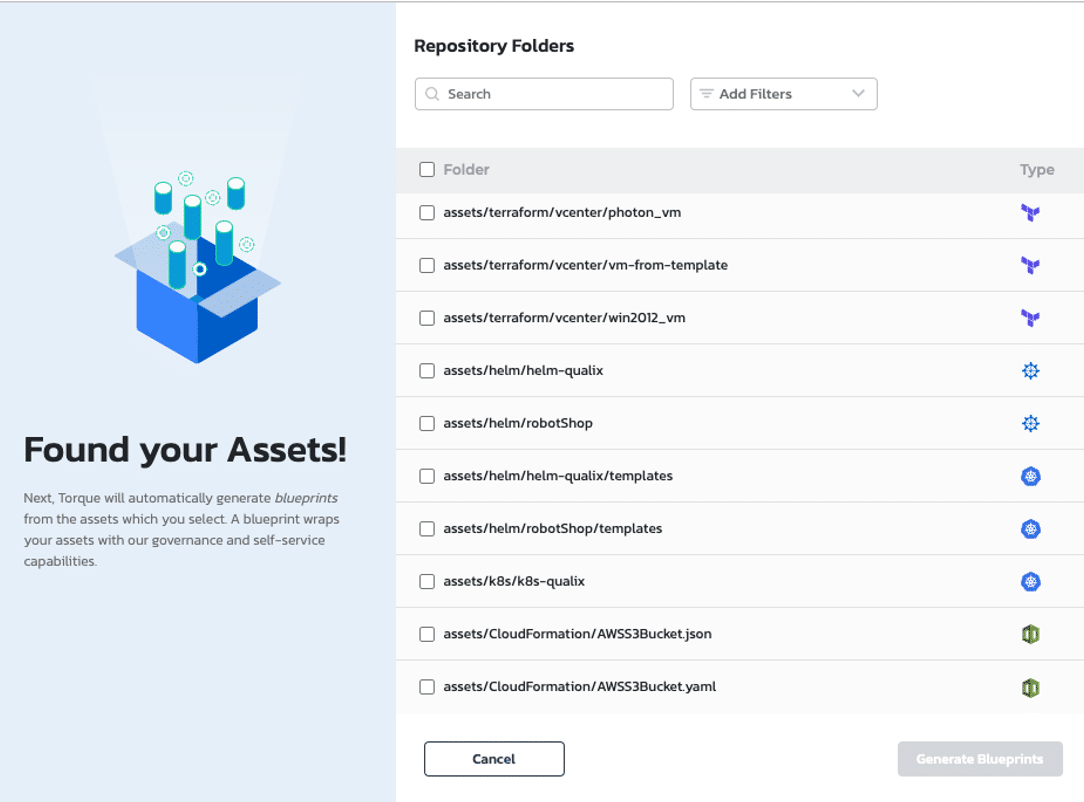
Torque then automatically inspects, identifies, and normalizes all of the infrastructure definitions from the assets you select.
This allows the infrastructure files to be understood easily by any user, regardless of their experience with the IaC or Kubernetes tool used to define them.
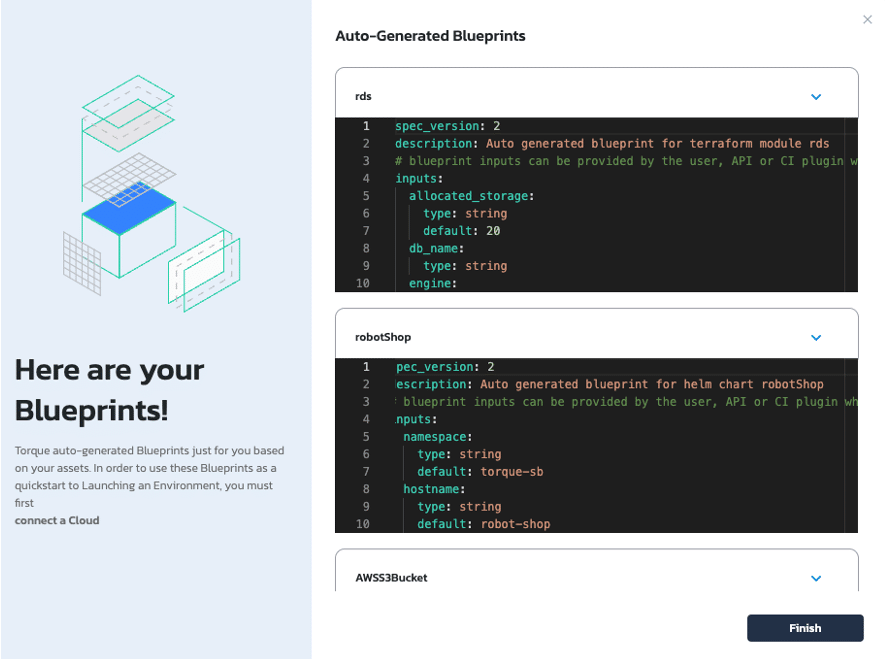
With the infrastructure normalized, Torque admins can then automatically import it to build reusable blueprints for the environment needed to support a unique use case.
To refer to our earlier example, the blueprint would define the full configurations and dependencies of the database, storage, and microservices that were defined in separate IaC and Kubernetes resources in the Git repository.

Then, in a similar fashion to Quali CloudShell, Torque’s admins can publish the blueprint to list it on a self-service catalog for end users to deploy, with role-based access controls protecting all configurations.

Once live, end users can perform Day-2 actions on the cloud infrastructure within the environment—such as launching, connecting, restarting, or terminating AWS and Azure VMs—to further eliminate reliance on DevOps or IT for basic day-to-day operations.

Delivering infrastructure via Quali Torque also introduces options for cloud governance, management, and cost optimization.
Once you’ve enabled your teams to deliver and launch infrastructure via Quali Torque, you can set rules on how they configure and operate that infrastructure.
For example, admins can create a rule to prohibit the deployment of specific VM sizes via AWS and Microsoft Azure, and Torque will prohibit any deployment and notify the admin about any attempted violation.
This accelerates operations for anything that is unlikely to substantially impact cloud budget while providing oversight for activity that will. Torque also provides pre-built polices out-of-the-box that can be modified and applied to resources automatically.
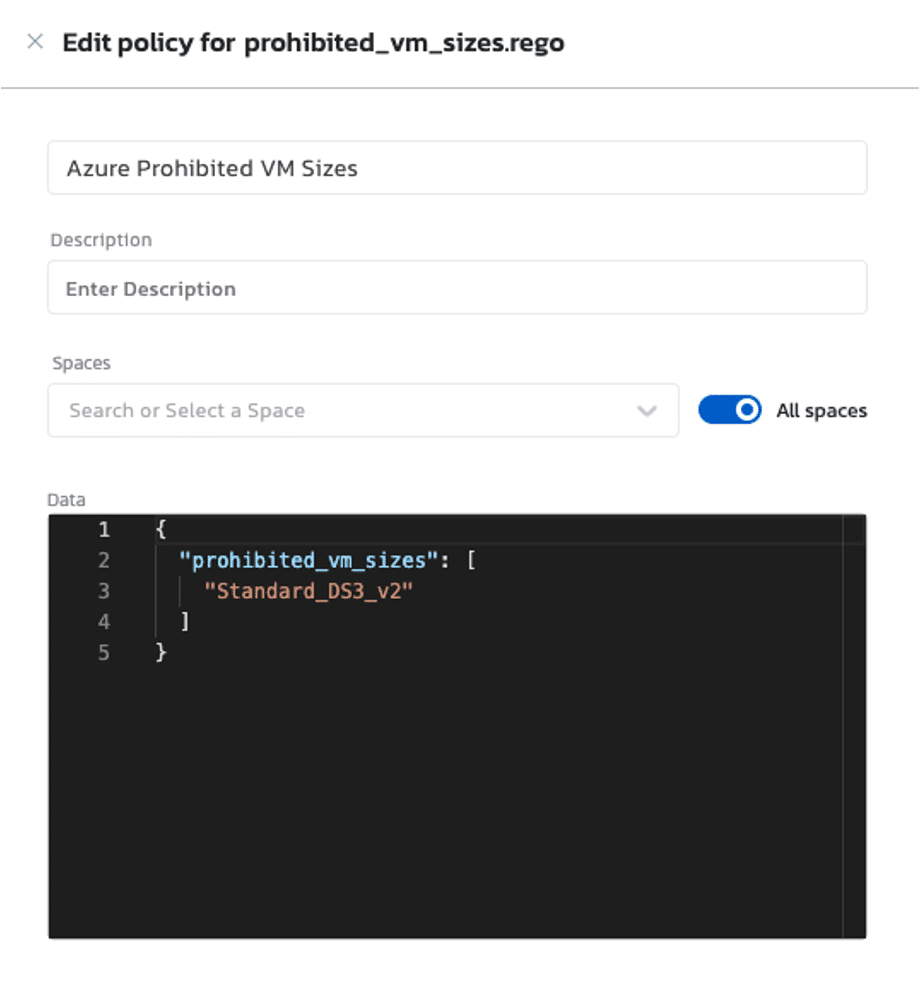
At scale, delivering infrastructure via Quali’s Torque platform provides interesting data. Since Torque understands the cloud instances configured in your environments and tracks how frequently those instances operate, the platform can track and forecast cloud costs in real-time.
Additionally, viewing this activity from the perspective of the configured environment and the workspace—which can be limited only to certain teams and infrastructure—provides context into how infrastructure is used, and by whom.
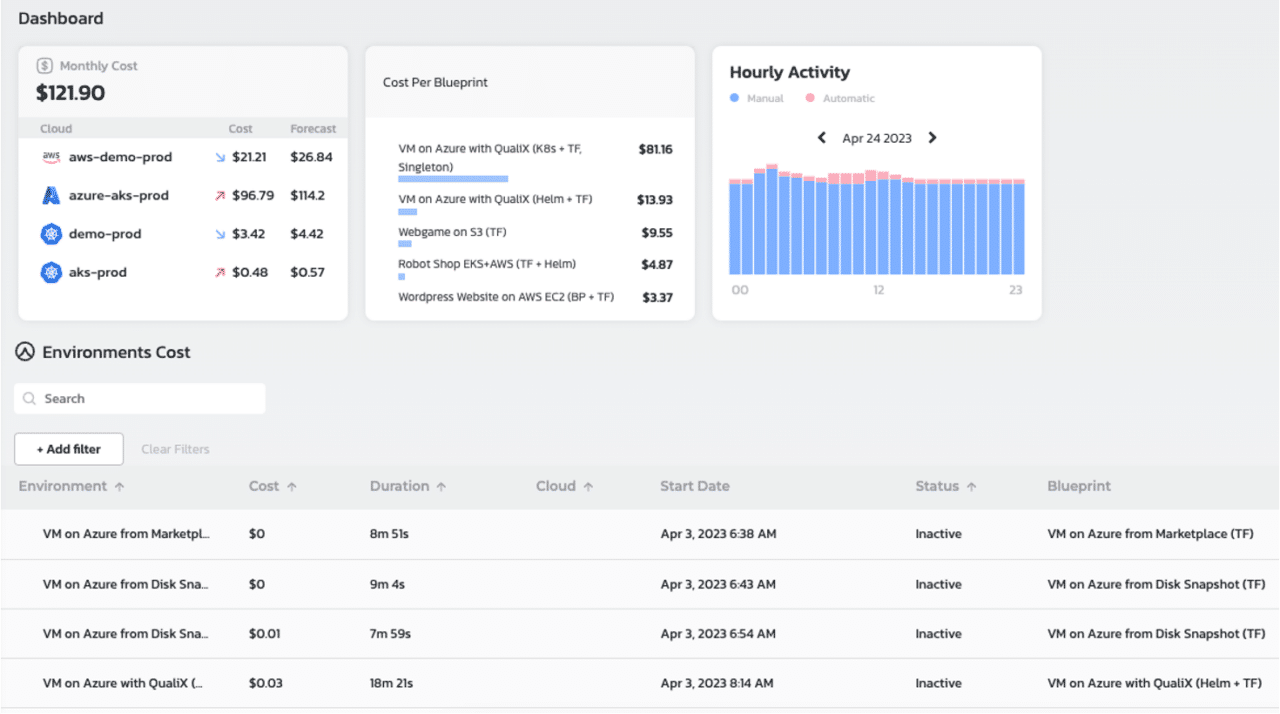
Administrators, operations teams, and engineering leadership can identify cost anomalies as they occur, update their configurations to reconcile the anomaly, and implement new policies to prevent it from reoccurring over time.
In short, both CloudShell and Torque are designed to help you deliver, operate, and manage infrastructure faster and more easily—regardless of how your teams use infrastructure today.
Of course, not every organization is going to be an exact match for one or the other product—many of our customers use both Torque and CloudShell, and have found ways to integrate them together.
To learn more, schedule a demo with our team and we’ll answer any questions you may have.


